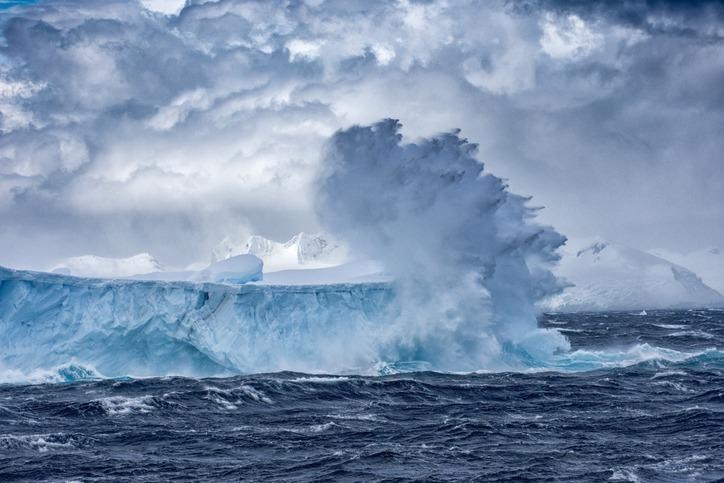Reviewed by Alex SmithApr 25 2022
A lesser-known form of ozone that plays a crucial role in heating the Southern Ocean has been determined by a new study. It is known as one of the primary cooling systems of the Earth.
 Iceberg in the Southern Ocean. Image Credit: Ray Hems/Getty.
Iceberg in the Southern Ocean. Image Credit: Ray Hems/Getty.
Ozone is a gas that is made of three oxygen atoms. Numerous studies have explained ozone in the stratosphere as well as its role in protecting people from the sun’s detrimental ultraviolet radiation. Being closer to ground level, in the troposphere, ozone is considered to be toxic to humans.
A new study headed by researchers of the University of California (UC Riverside) discloses this lower level of ozone is contributing a great deal of heat to the Southern Ocean — more than what had been understood previously by the researchers.
This finding has been reported in the Nature Climate Change journal.
People haven’t paid much attention in the past to tropospheric ozone in terms of ocean heat uptake. Based on our models, they should be.
Wei Liu, Study Author and Climate Scientist, University of California-Riverside
Oceans help in eliminating a huge proportion of the heat and carbon that tend to enter the air when humans burn fossil fuels. The Southern Ocean, also known as the Antarctic Ocean, gathers a third of all surplus carbon present in the world’s atmosphere. Also, an estimated 75% of the surplus heat has been gathered by the world’s oceans.
It is crucial to comprehend this heating so it can be regulated. Increased ocean warming is contributing to well-documented problems of sea levels increase.
To gain better insights, Liu and an international group of researchers explored climate model simulations consisting of modifications in ozone levels between 1955 and 2000. Such model simulations separated both tropospheric and stratospheric ozone from other impacts on Southern Ocean temperatures, thereby enabling them to see how each factor tends to contribute.
While both tropospheric and stratospheric ozone adds up to the Southern Ocean warming, the researchers found that the latter contributes even more.
Historically, about a third of the ocean’s warming is attributable to ozone. For this third, about 40% is from the stratosphere, and the rest is troposphere.
Wei Liu, Study Author and Climate Scientist, University of California-Riverside
In the 1980s, increasing concern regarding a pollution-generated hole in the safe upper ozone layer lead to the establishment of the Montreal Protocol. As a landmark environmental agreement, it encoded the resolve of all 198 members of the United Nations to control chemicals creating that hole.
Although satellite images still display low levels of stratospheric ozone over the Antarctic, there seem to have been enhancements.
Since the protocol was ratified, ozone depletion has recovered somewhat in the stratosphere, and climate models project it will continue to gradually recover.
Wei Liu, Study Author and Climate Scientist, University of California-Riverside
Liu believes the outcomes of this study are beneficial for displaying where people can make additional changes that will improve the environment.
Volatile organic compounds or so-called VOCs obtained from products like tobacco smoke, pesticides and automobiles are gases that tend to form the building blocks of tropospheric ozone.
The same factor is true for nitrogen oxides that are produced by combustion, or carbon monoxide obtained from gas stoves, furnaces and automobile exhausts. Many of these products could be altered to produce fewer VOCs.
Liu stated, “Tropospheric ozone is an air pollutant. If we reduce our production of this, we get the dual benefits of less air pollution and most likely, less Southern Ocean warming as well.”
Journal Reference:
Liu, W., et al. (2022) Stratospheric ozone depletion and tropospheric ozone increases drive Southern Ocean interior warming. Nature Climate Change. doi.org/10.1038/s41558-022-01320-w.